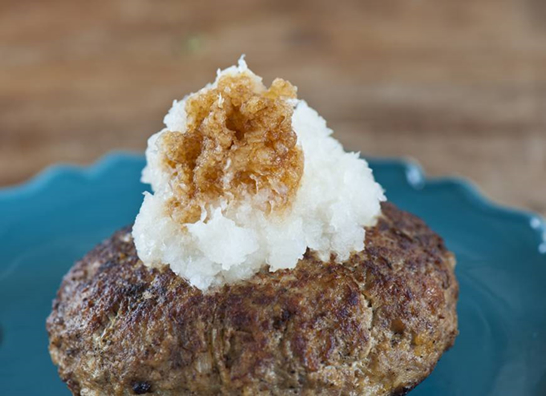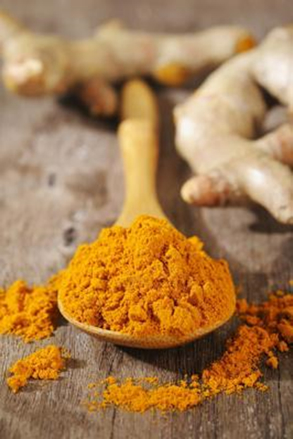人生は、自転車のようなもの
バランスをとるためには、
動き続けなければいけない。
Monthly Archives: January 2016
Low-weight, high-repetition exercise increases bone density up to 8 percent in adults
Released on EurekAlert! on Oct. 26, 2015
http://www.eurekalert.org/pub_releases/2015-10/ppr-slh102315.php
Findings defy prior assumptions that heavy weightlifting is necessary for building bone mass
Portavoce Public Relations
BALTIMORE – October 26, 2015 – A new research study published in The Journal of Sports Medicine and Physical Fitness finds that low-weight, high-repetition resistance training increases bone mineral density in adults, challenging assumptions that heavy weight-training is required to build bone mineral density. Participants who completed the study experienced up to 8 percent bone mineral density increases in the legs, pelvis, arms and spine.
The full study titled, “Low Load, High Repetition Resistance Training Program Increases Bone Mineral Density In Untrained Adults,” is now available at http://www.minervamedica.it/en/journals/sports-med-physical-fitness/article.php?cod=R40Y9999N00A150155&acquista=1. The findings indicate that this type of strength training may be an effective and maintainable method of increasing bone mineral density in older people and sedentary groups. A secondary finding indicates postmenopausal women and osteopenic individuals (those with low bone mineral density) would benefit most from a low-weight, high-repetition exercise regimen.
“These findings challenge the traditional thought that high-weight, low-repetition exercise is the ideal way to increase bone mineral density,” said Jinger Gottschall, Associate Professor and lead researcher of the study conducted at Penn State. “This is such a profound finding because low-weight, high-repetition exercise is easily attainable by anybody and everybody. This approach could help at-risk populations minimize the risk of osteoporosis.”
In the study, 20 untrained adults (people who completed less than 30 minutes of exercise per week for the previous six months) completed a 27-week group exercise program. Participants were assigned to one of two groups that either completed full-body weight-training workouts or workouts focused on building core muscles, in addition to cardiovascular workouts. The weight-training group completed two to three BODYPUMP(R); classes per week, a low-weight, high-repetition resistance training program in which the participants used a bar and self-selected weights.
The study analysis found:
- Participants in the weight-training group demonstrated an 8 percent increase in leg bone mineral density, a 7 percent increase in pelvis bone mineral density, a 4 percent increase in arm bone mineral density and a 4 percent increase in spine bone mineral density. The core group’s bone mineral density did not change significantly.
- Postmenopausal women and osteopenic individuals experienced significant bone mineral density increases of up to 29 percent.
- A positive correlation between squat strength and pelvis bone mineral density, a link that indicates the exercises used in the study could effectively decrease the risk of a hip fracture.
Significant bone mineral density increases for osteopenic and postmenopausal people
Two osteopenic individuals and three postmenopausal women participated in the study, and both groups experienced much higher increases in bone mineral density than the rest of the group. Individuals with osteopenia experienced leg and pelvis bone mineral density increases of 29 percent, more than triple the results other participants experienced. The postmenopausal participants’ bone mineral density increases ranged from 10 to 22 percent.
Pelvis and leg strength prevent fractures
In the study, people in the weight-training group experienced 25 percent greater increase in leg strength than those in the core group. Changes in leg strength were also strongly correlated with changes in pelvic bone mineral density.
According to the National Osteoporosis Foundation, by 2020 approximately 14 million people over the age of 50 are expected to have osteoporosis and another 47 million to have low bone mass.(1) After age 40, bone mineral density declines at an accelerated rate;(2) therefore, it is crucial to build a peak bone mass before this rapid decline and to maintain bone mass later in life.
The hip is the most common and devastating fracture site for elderly people with osteoporosis.(3) According to Gottschall, a large proportion of fall-related deaths are due to complications following a hip fracture. One out of five hip fracture patients die within a year of their injury. Maintaining a healthy bone mineral density in the pelvis and legs can help prevent these life-altering breaks, says Gottschall. High-repetition exercise is a great way for people to build full-body strength.
“Heavy weightlifting has been shown to increase bone mineral density, however many older and inactive adults cannot safely participate in this type of strenuous activity. The exercise regimen used in this study is a more feasible option,” said Bryce Hastings, Group Fitness Research Officer, Les Mills International. “The beauty of LES MILLS BODYPUMP is that it is built on high-repetition choreography and instructors can identify progressive movement options for participants of any fitness level so they can build strength and bone density.”
Original Article released:
http://www.eurekalert.org/pub_releases/2015-10/ppr-slh102315.php
Linke Cited on: LINKE de DIET:
http://www.nutritio.net/linkdediet/news/FMPro?-db=NEWS.fp5&-Format=detail.htm&kibanID=51670&-lay=lay&-Find
Health Benefits of Nopales
Posted on Organic Facts
https://www.organicfacts.net/health-benefits/vegetable/nopales.html
The other day when I was watching a TV show about Japanese people living overseas, they introduced edible cacti. An edible cacti!? Being quite surprised I googled it and found it is nothing so unusual. Moreover, it is rather nutritious.
Nopales are spectacularly healthy type of cacti with a wide range of health benefits including its ability to aid in weight loss, prevent cancer, improve skin health, protect heart health, regulate and improve digestion, boost the immune system, optimize metabolic activity, build strong bones, cure insomnia, and reduce inflammation throughout the body.
Nopales are a form of vegetable that is made from the soft pads of underdeveloped prickly pear cacti. The useful vegetative pads are either green or purple, and are roughly the size of a person’s hand. They have a consistency somewhere between green beans and green peppers, and are regularly added to eggs and steak stir fry. They are native to Mexico and Central America, and it is in this cuisine that you most commonly find fresh nopal. It is mainly found fresh in Mexico, and either canned or pickled as an export, particularly to the Southwestern United States and Texas.
Nutritional Value of Nopales
The wealth of health benefits that come from nopales are mainly attributable to its nutrition and vitamin content, which includes riboflavin, vitamin B6, copper, iron, fiber, vitamin-A, C, K, calcium, potassium, magnesium, and manganese. It is also an important source of certain organic compounds like phytochemicals and certain polysaccharides that also contribute to the health boosting power of nopales. Let’s explore some of these health benefits that people have been enjoying for thousands of years in the more details explanations below.
Health Benefits of Nopales
Digestion: Nopales are forms of cacti, so they are very fibrous and contain a great deal of dietary fiber. Dietary fiber is essential in the digestive process, because it adds bulk to bowel movements that make them easier to pass through the smooth muscles of the digestive tract. It also stimulates peristaltic motion to move the bowels along the tract, and reduces symptoms of both diarrhea and constipation. Furthermore, excess fiber in the body can actively reduce the amount of cholesterol, thereby protecting your heart health as well.
Weight Loss: There are a number of components within nopales which can aid in weight loss. First, fiber can make the body feel full and inhibit the release of ghrelin, which is the hunger hormone, so overeating is reduced. Secondly, this plant is very low in saturated fat and cholesterol, but it is packed with metabolic potential, so the body works at a higher level without gaining weight. The presence of vitamins B6, thiamin, and riboflavin also makes metabolic function work quickly, and they maximize fat burning and the transformation of food to usable energy.
Cancer Prevention: The variety of phytochemicals, flavonoid compounds, vitamin-C, and other antioxidants found in nopales make it extremely beneficial for the entire immune system, particularly when it comes to various cancers. Antioxidants are beneficial compounds that seek out free radicals in the body and eliminate them before they can mutate the DNA of healthy cells into cancerous cells. Free radicals are the dangerous byproducts of cellular metabolism that can accumulate in the body and cause a variety of health problems, including cancer. The content of vitamin A and flavonoids in nopales have also been connected to a reduction in skin, lung, and oral cancers.
Metabolic Activity: One of the most important aspects of nopales in terms of health is its mineral and vitamin content. Nopales contain thiamin, riboflavin, niacin, and vitamin-B6, all of which are vital components of cellular metabolism and normal, regulated enzyme function throughout the body. If your organ systems and hormonal balance are optimized, then your body will run more efficiently, you will increase weight loss, promote healthy muscle gain, boost repair and maintenance of organs, and generally tone the entire body.
Builds Strong Bones: The mineral content of this powerful cactus leaf includes a modest level of calcium, which is an essential part of building strong bones and repairing bones after being damaged.
Improve Sleep: This plant also contains magnesium, which is a useful mineral for inducing feelings of sleep for people suffering from insomnia, chronic anxiety or restlessness. It induces the release of serotonin in the body, which results in increased melatonin levels. It also has a slightly sedative effect, which reduces nerve function and calms the body, helping you to fall asleep.
Inflammation: The juice that is taken out of the pickle pear leaves of nopales has been shown to have anti-inflammatory effects on a variety of body parts, including those symptoms associated with arthritis, injury, joint pain, and muscle strain. Apply the juice topically to the affected area, of consume the vegetable itself to also enjoy the effects.
Skin Health: The phytochemical and antioxidant characteristics of nopales make them a good defensive mechanism against premature aging symptoms, like wrinkles and age spots. The free radicals left after cellular metabolism can seriously impact the skin and by eating nopales, you can keep your skin looking healthy, young, and refreshed.
Diabetes: The extracts from the leaves of prickly pear cactus can be powerful regulators of glucose levels within the body. For patients with type 2 diabetes, it can cause a reduced spike in glucose levels following eating, which makes the management of diabetes easier.
Ulcers: Following the traditional use of nopales as a cure for gastric ulcers, recent studies have verified these effects. Apparently, the mucilage and fibrous material in nopales makes it inhibit the development of gastric ulcers and those that develop due to excessive consumption of alcohol, so for people who regularly suffer from this painful condition, add some of these powerful plants to your diet and improve the quality of your life!
A Few Words of Caution: Due to its ability to regulate and affect blood sugar levels, nopales can sometimes make people hypoglycemic, and it should also not be consumed excessively before an operation, since it makes it difficult to control glucose and blood nutrient levels. Other than those health concerns, nopales are a delicious and highly nutritious addition to your diet!
Information cited at Organic Facts
https://www.organicfacts.net/health-benefits/vegetable/nopales.html
Daikon: The great radish of Japan
 Posted on The Japan Times on Dec 18, 2015 by Makiko Itoh
Posted on The Japan Times on Dec 18, 2015 by Makiko Itoh
Grated radish on a meat pattie | MAKIKO ITOH
According to the Ministry of Health, Labor and Welfare, the most popular vegetable in Japan is the daikon radish, beating out onions and cabbage. Both the white roots and green tops are eaten throughout the year in many ways: raw, pickled, as sprouts, dried and simmered. Daikon are available year-round, but winter varieties are thought to have the sweetest flavor, perfectly suited to hot, simmered dishes.
Radishes most likely originated in the Mediterranean region, but they had already reached Japan by the 3rd or 4th century — although initially only the green tops were eaten. The tender young leaves of the radish plant have been included as one of the nanakusa, the seven herbs that are traditionally eaten in rice porridge in January to wish for health and longevity during the year.
While the greens are rich in vitamins and minerals, the most versatile part of the vegetable is the root, which became widely cultivated during the early Muromachi Period (1392-1573).
Daikon come in many shapes and sizes, ranging from the standard type, which are about 10-15 cm in diameter, to the huge Sakurajima variety, which looks like a gigantic turnip and can weigh as much as 30 kg. (Incidentally, small red radishes were called “20-day daikon” until recently, although these days the imported word radisshu is used more often.)
The most common use for daikon is so ubiquitous that it’s hardly thought of as cooking: daikon oroshi (raw grated). Daikon oroshi is used as a condiment in many meat and fish dishes, as well as a refreshing addition to tempura sauce (tentsuyu) and soba noodle sauce. This way of using grated raw daikon seems to have started in the Edo Period (1603-1868), when it was thought to aid digestion. It turns out that this belief was right. Daikon is an excellent source of the digestive enzymes diastase, amylase and esterase. These enzymes become much easier to absorb when the daikon is grated.
Grated daikon is good with a rich, oily fish — like mackerel — but it’s also great on steaks, hamburgers and other meat dishes. It’s similar to horseradish, but less pungent.
Though the digestive enzymes as well as the vitamin C in daikon are destroyed by heat, when cooked it can still aid digestion because of its fiber content. This is one reason why the vegetable is essential to oden, the stew made up mostly of fried fish-paste products. Of course, simmered daikon is delicious since it absorbs the flavors of the broth and becomes sweet and tender. It is also believed to warm the body, according to traditional Chinese medicine theories.
Dried daikon strips, known as kiriboshi daikon, which are rehydrated before cooking, and pickled daikon were also important staples, especially during the winter months. The most famous type of pickle is the takuan, which takes months to make and is thought to have been invented by the Zen Buddhist monk Takuan Soho.
In recent years there has been a renewed interest in daikon as a healthy food. One recent fad is to mix grated daikon with plain yogurt and honey, a concoction that keeps you regular.
Buri (amberjack) daikon is a classic simmered dish eaten during winter, which makes good use of the seasonal, oil-rich fish. The dish is usually made with the ara (the head and bones left over after the fish is filleted) but the recipe here is an easier version that uses precut filets.
Check out the great recipe of Daikon here:
http://www.japantimes.co.jp/life/2015/12/18/food/daikon-great-radish-japan/#.Vox0tr_OFOQ
January 11th is “Kagami-biraki.”
Kagamimochi is one of the traditional New Year symbols in Japan. Kagamimochi is a set of two circular, flat rice cakes, one is smaller than the other. These two rice cakes are piled with small one on top and displayed as an offering to god during New Year’s holidays. Placing two rice cakes of different sizes on top of each other is referred as good luck being overlapped and considered to be fortunate. Round-shaped rice cakes are considered to represent human spirits – hearts – and they have been called ‘Kagamimochi’ for ancient common mirror (kagami).
New Year’s Day has always been a fresh start for all the living things, when god is believed to offer energy to all of them. It is the displayed kagamimochi that god entrusts energy with. Kagami-biraki is to release the entrusted energy and be blessed with it by eating the rice cakes.
When the event of kagami-biraki is held simply depends on each district and its custom, but it is generally held on January 11th. There is not much strict tradition to practice kagami-biraki except how to split the rice cakes. Kagamimochi is a holly offering so should not be cut by a sharp knife. Instead, break them into appropriate sizes by hands or solid objects like a hammer. Regardless the odd-shaped pieces, the rice cakes shall still be tasty in Ozoni, vegetable soup, Oshiruko, sweet bean soup, or simply grilled with your favorite seasonings.
In recent times, more and more traditions are fading out, but kagamimochi seems to be widely spread. Even a small-sized kagamimochi displayed in one corner of a living room can create some holiday atmosphere without a set of gorgeous New Year’s food.
May 2016 become a lively year for all of us. Enjoy Kagamimochi!
Does Curcumin Help Diabetes?
Posted on LIVESTRONG.COM on Jul 18, 2015 | By Brindusa Vanta
http://www.livestrong.com/article/372874-curcumin-for-diabetes/
Turmeric contains curcumin.
Photo Credit Chorboon Chiranuparp/iStock/Getty Images
Diabetes is a common metabolic disorder that was diagnosed in 1. 9 million Americans in 2010, according to American Diabetes Association. This condition is characterized by higher than normal blood sugar levels and is associated with digestive symptoms and complications affecting the heart, kidneys, eyes and nervous system. Curcumin, a natural supplement used by Ayurvedic physicians, may help improve digestive problems and blood glucose levels associated with diabetes; however, more research is needed to fully confirm these benefits. If you suffer from diabetes and consider taking curcumin, you should talk first to your doctor first.
Indications
Turmeric is a perennial herb from ginger family and its active ingredient, curcumin, is widely used in Asia as a spice in curry powders and mustards, as a natural colorant in food industry, and also as a medicinal powder. In Oriental medicine, it is primarily used for digestive problems, especially heartburn, excessive gas and diarrhea. Since diabetics may experience these symptoms, alternative health care providers may use curcumin to improve digestive symptoms as well as blood sugar levels associated with diabetes.
Research
A study carried out by research team from Columbia University Medical Center found that animal subjects exposed to turmeric were less prone to developing type 2 diabetes based on their glucose level, glucose and insulin tolerance tests. The authors also observed that curcumin has anti-inflammatory and anti-oxidant qualities that may be responsible for improving insulin resistance and therefore may prevent type 2 diabetes. This study was published in July 2008 issue of “Medical News Today.”
Dosage & Safety
A daily dose up to 8g of curcumin is generally considered safe and well tolerated. Higher doses may case gastrointestinal side effects. Curcumin should not be used by women who are pregnant or breastfeeding, or by people who have gall bladder diseases or are about to undergo surgical procedures. Curcumin may cause allergic reaction in susceptible people. This herb may interact with herbs and drugs that have blood thinning effects.
Considerations
Consult a qualified health care professional to find out optimal dosage of curcumin that may help improve your glucose levels. Other natural supplements and a healthy diet may also be recommended in addition to curcumin. Monitor yourself closely during the first month of using curcumin to avoid lowering too much your blood sugar levels. Keep in mind that curcumin should not be used to replace anti-diabetes drugs. U.S. Food and Drug Administration has not approved curcumin for treating diabetes or any other medical condition.
Original Article available at LIVESTRONG.COM
http://www.livestrong.com/article/372874-curcumin-for-diabetes/
Coconut oil shows promise in the prevention of deadly bloodstream infection
Public Release: 18-Nov-2015
http://www.eurekalert.org/pub_releases/2015-11/asfm-cos111715.php
Coconut oil gained tremendous popularity in Japan last year.
It is beneficial not only for our beauty but also for our medical health, as introduced in the following article.American Society for Microbiology
Washington, DC – November 18, 2015 – Coconut oil may be effective at combating infection with Candida albicans, according to a study published November 18th in the American Society for Microbiology’s new open access journal mSphere. The study found that coconut oil consumption reduced gastrointestinal colonization by C. albicans in mice.
“We found that diet can be an effective way to reduce the amount of Candida in the mouse,” said lead study author Carol Kumamoto, PhD, professor of molecular biology and microbiology, Tufts University School of Medicine. “The extension of this finding to the human population is something that needs to be addressed in the future.”
C. albicans is part of the normal gut microbiome of humans and some animals. In immunocompromised individuals and older adults, however, C. albicans can leave the gut, enter the bloodstream, and cause invasive infection affecting organs including the kidneys, liver, spleen, lungs, brain, and heart valves. Roughly 40% to 50% of individuals who have systemic C. albicans infection will die from it. “People who get this disease are very sick and generally in the hospital. We are talking about cancer patients, people who receive transplants, premature infants, intensive care unit patients with catheters, and sometimes the elderly,” said Dr. Kumamoto. “Candida is one of the most common causes of bloodstream infections in hospitalized patients.”
Clinicians can use antifungal drugs to prevent C. albicans infection in some high-risk patients, but this isn’t ideal because it can contribute to the emergence of drug resistant strains. Previous research has shown that changes to diet, including changes in the amount and type of fat, can alter gastrointestinal microbiota. In vitro studies have shown that coconut oil, in particular, has antifungal properties.
In a new NIH-funded study, Dr. Kumamoto and Alice H Lichtenstein, D.Sc., director of the Cardiovascular Nutrition Laboratory at the Jean Mayer USDA Human Nutrition Research Center on Aging at Tufts University designed high fat diets containing coconut oil, beef tallow, soybean oil or a standard diet. Mice were fed these diets for 14 days prior to inoculation with C. albicans and 21 days following. At 21 days post inoculation, gastrointestinal colonization with C. albicans was significantly lower in the stomach contents of mice fed the coconut oil diet than mice fed the beef tallow diet (P<0.0001), soybean oil diet (P<0.0001), or the standard diet (P<0.0001). “When you compared a mouse on a high fat diet that contained either beef fat or soy bean oil to mice eating coconut oil, there was about a ten-fold drop in colonization,” said Dr. Kumamoto.
In another experiment, the researchers switched mice on the beef fat diet to the coconut oil diet. “Four days after the change in diet, the colonization changed so it looked almost exactly like what you saw in a mouse who had been on coconut oil the entire time,” said Dr. Kumamoto.
“There are two directions that we would like to take with this research now,” said Dr. Kumamoto. “One of them is finding out the mechanism of how this works. That is a big question we would like to answer. The second question is whether this can have any impact on humans.” The researchers are in discussion with Joseph Bliss, M.D., Ph.D., at Women and Infants Hospital of Rhode Island to launch a clinical trial testing coconut oil in hospitalized infants at high-risk for developing systemic candidiasis.
Original Article released:
http://www.eurekalert.org/pub_releases/2015-11/asfm-cos111715.php
Linke Cited on: LINKE de DIET:
http://www.nutritio.net/linkdediet/news/FMPro?-db=NEWS.fp5&-Format=detail.htm&kibanID=52149&-lay=lay&-Find







